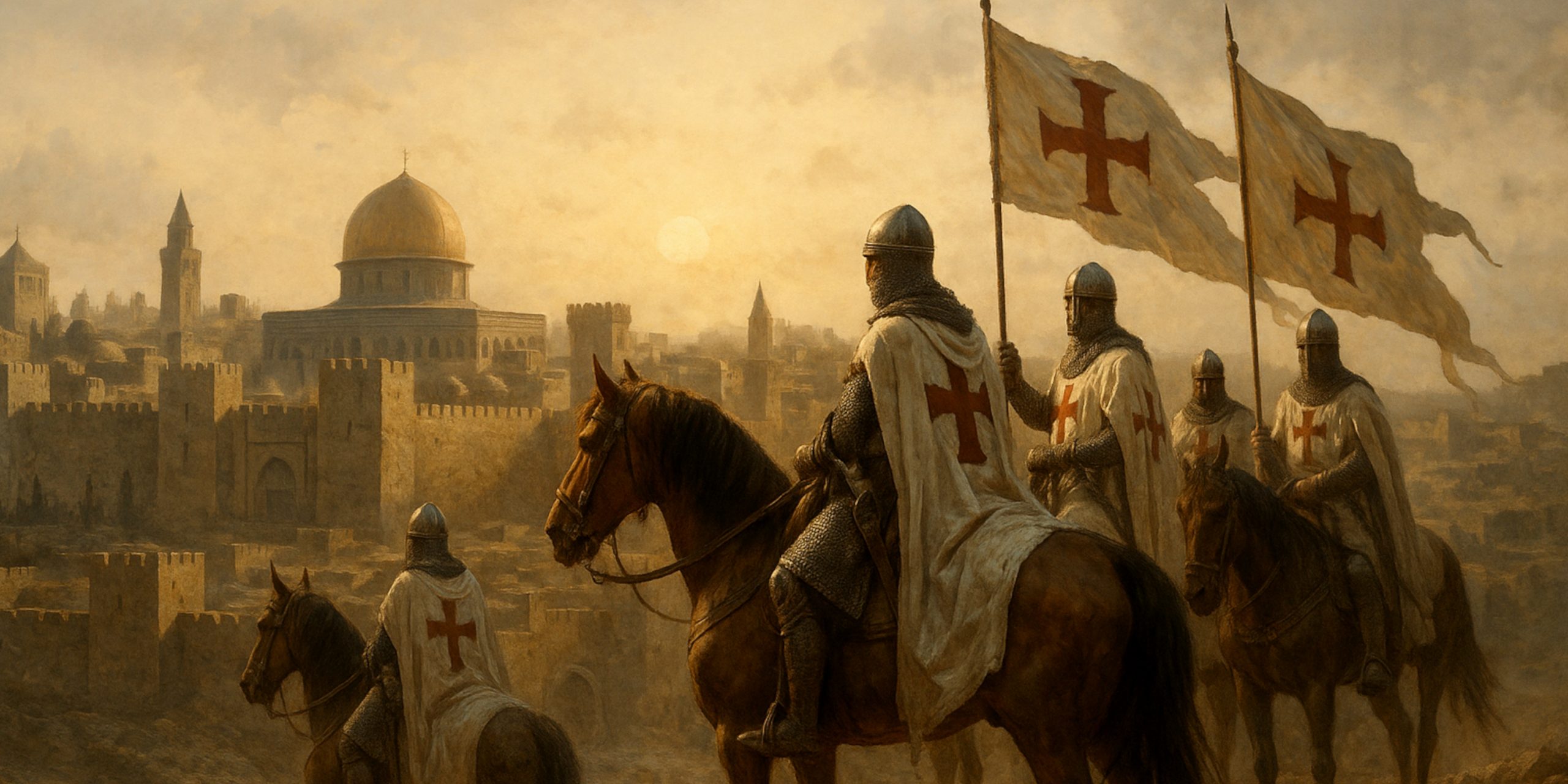
Few periods in history are as tangled in legend, propaganda, and bad television as the Crusades. Between 1096 and 1291, popes, kings, knights, and plenty of opportunists headed east to “liberate” the Holy Land, usually leaving behind chaos, debt, and very mixed results.
Let’s clear the air with seven hard facts and seven myths that deserve to be buried in the sands of Outremer.
The Facts
1. The First Crusade Was Shockingly Successful
The First Crusade (1096–1099) was a near miracle in military terms. Despite no central command and constant bickering, the crusaders managed to capture Jerusalem. Chroniclers described it as divine will. Modern historians might call it luck, logistics, and a lot of infighting among their enemies.
2. Not All Crusades Targeted Muslims
Many imagine every crusade as Christian vs. Muslim, but plenty were waged against fellow Christians and heretics. The Albigensian Crusade in southern France targeted Cathars, while the Fourth Crusade famously sacked Constantinople, a Christian city, in 1204. So much for unity under Christendom.
3. The Crusades Were as Much About Politics as Piety
Religious devotion played a major role, but land, wealth, and influence were powerful motivators. Many nobles saw crusading as a chance to gain estates, settle debts, or simply get out from under their creditors back home. God may have willed it, but so did ambition.
4. The Crusades Helped Shape Modern Europe
Thousands of nobles mortgaged or sold land to fund their expeditions, which led to shifts in property ownership and the centralisation of royal power. The absence of powerful lords abroad gave kings like Philip II of France and Henry II of England a welcome opportunity to tighten control.
5. Muslim Forces Were Often More Organised
While the Crusaders squabbled, Muslim leaders like Saladin and later Baybars created more unified fronts. Saladin’s retaking of Jerusalem in 1187 showed the value of discipline and diplomacy, as well as patience. The Crusaders might have had zeal, but he had strategy.
6. Trade and Cultural Exchange Flourished
Despite the bloodshed, the Crusades opened trade routes between East and West. Europeans encountered advanced medicine, architecture, and mathematics, as well as spices and silk. You could say the Crusades were the world’s least efficient cultural exchange programme.
7. The Crusader States Lasted Nearly Two Centuries
The so-called “Latin East” wasn’t a fleeting experiment. From 1099 until the fall of Acre in 1291, Westerners ruled significant chunks of the Levant. They built castles, minted coins, and left behind enough ruins to keep archaeologists busy for another century.
The Myths
1. The Crusades Were a Single, Unified Effort
There wasn’t one grand crusade. There were at least nine major ones, plus dozens of smaller expeditions. Each had its own politics, motives, and disasters. If anything, the Crusades were a brand, and everyone from popes to peasants tried their hand at using it.
2. They Were Purely Religious Wars
Religion was the banner, but the baggage included personal glory, money, and old-fashioned revenge. Many crusaders were as devout as they were opportunistic, and some barely knew what the Holy Land was before signing up.
3. The Crusaders Were Primitive Barbarians
Crusaders weren’t mindless brutes from the Dark Ages. Many were educated knights and nobles trained in logistics, siegecraft, and diplomacy. That said, massacring entire populations of cities like Jerusalem or Constantinople doesn’t exactly scream “enlightened.”
4. Muslims and Christians Were Constant Enemies
Periods of peace and trade existed between crusades. Some Muslim rulers even allied with Christian forces against rival Muslim dynasties. Politics often trumped faith, which makes medieval diplomacy feel uncomfortably modern.
5. The Crusades Were the Start of Western Aggression
It’s fashionable to see the Crusades as Europe’s first imperial misadventure, but the truth is messier. The Byzantine Empire had been fighting Muslim powers for centuries before the Crusaders arrived. It was less about “Western expansion” and more about mutual opportunism.
6. They Were All Failures
In the long run, the Crusades didn’t hold the Holy Land, but many achieved their short-term goals: control of key ports, temporary truces, and wealth redistribution. They were costly, yes, but not entirely futile. Like a medieval version of Brexit, results varied wildly depending on who you ask.
7. The Crusades Were Entirely Medieval Madness
The Crusading idea lasted well beyond the Middle Ages. Campaigns against the Ottomans in the 16th century, and even colonial rhetoric in later centuries, borrowed heavily from crusading language. The cross became less about Jerusalem and more about whatever frontier needed justifying.
The Seven Swords Takeaway
The Crusades were not good vs. evil, or faith vs. faith. They were a complex mesh of faith, greed, courage, and incompetence. Both sides produced heroes and villains, scholars and butchers. The truth, as ever, lies somewhere between divine mission and very messy human nature.
Watch the documentary:



